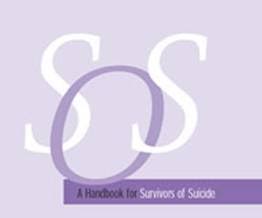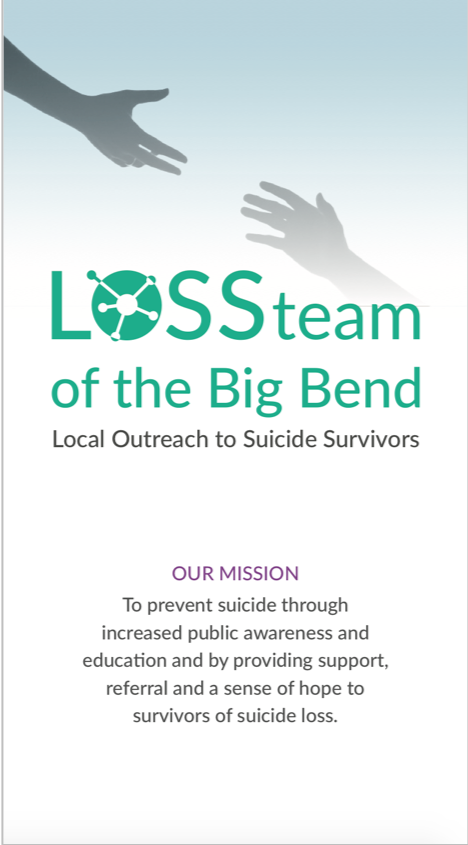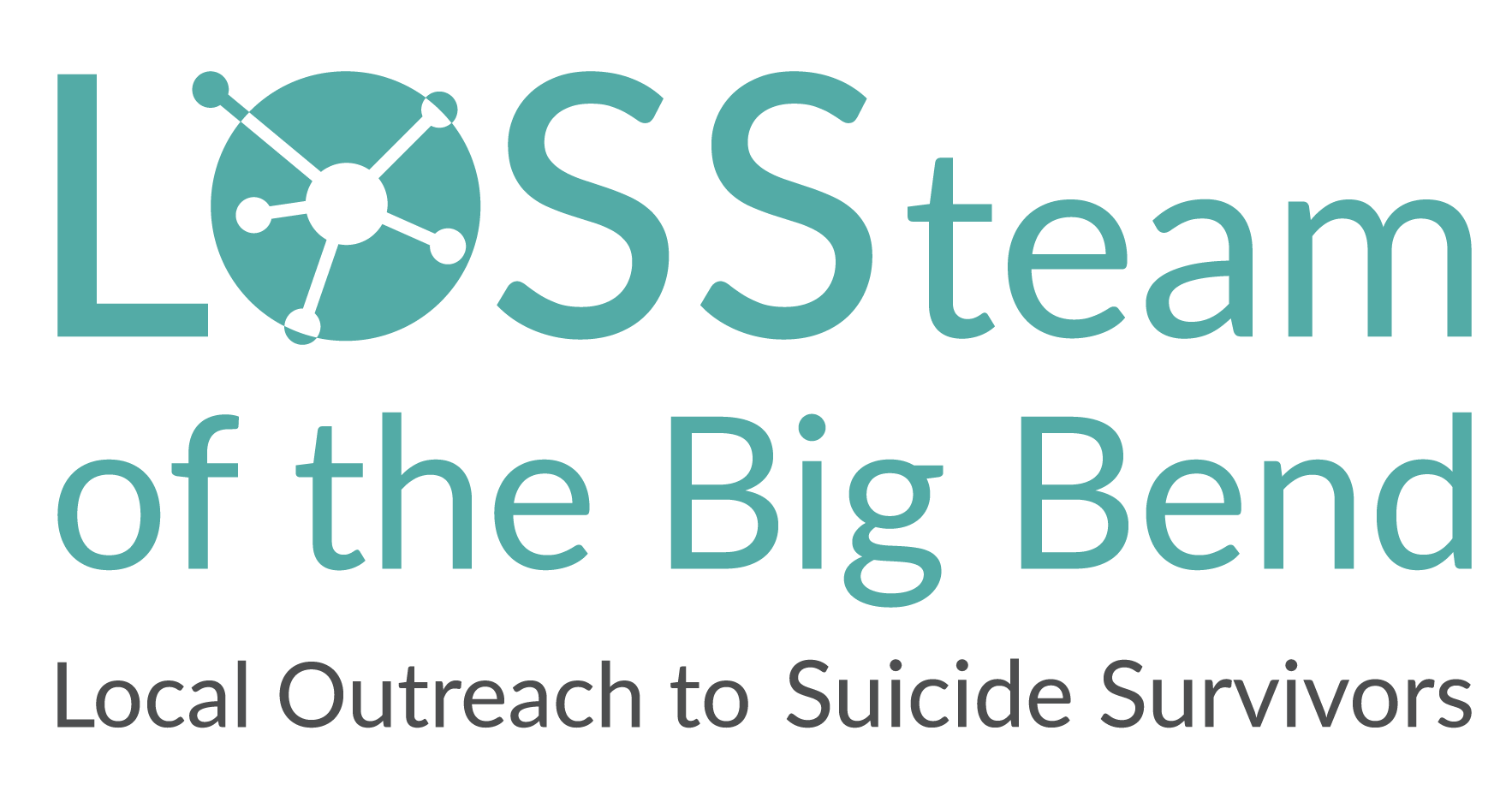Copyright © 2018 LOSS Team of the Big Bend
Click the one best representing you.
For Survivors And Those Supporting Them
For Professionals And Others
Helpful Resources For Survivors
Local Survivors of Survivor Loss Support Groups:

Other Local Resources:
Print Materials (please check online for most current edition):
After Suicide Loss: Coping with Your Grief
Bob Baughter and Jack Jordan
Beyond Surviving: 25 Suggestions for Survivors
Iris M. Bolton
Finding Peace Without All the Pieces: After a Loved One’s Suicide
LaRita Archibald
Healing After Loss: Daily Meditations for Working through Grief
Martha Whitmore Hickman
No Time to Say Goodbye: Surviving the Suicide of a Loved One
Carla Fine
National Suicide Awareness & Grief Resources:
American Foundation for Suicide Prevention.
Suicide Prevention Resource Center.
American Association of Suicidology.
The Jason Foundation. An organization dedicated to youth suicide prevention.
The Trevor Project. An organization dedicated to crisis intervention and suicide prevention for LGBTQ youth.
Highly Recommend

The SOS Handbook* is a pocket-sized, quick-reference booklet for suicide survivors. Written by fellow survivor Jeffrey Jackson, it is brief, clear, and packed with essential information covering nearly every aspect of the survivor ordeal. You can also order the print version of the handbook at the AAS Online Store. *Statistics are being updated.
http://www.suicidology.org/suicide-survivors/suicide-loss-survivors

If you are interested in receiving a copy of our brochure, please contact us through our Contact page.
Helpful Resources For Professionals – Advocacy, Statistics, and Publications
Florida Suicide Statistics:
Florida Statewide Office of Suicide Prevention
Florida Suicide Prevention Coordinating Council, 2017 Annual Report
National Suicide Statistics:
Publications:
Workshops, Online Classes, and Professional Development:
Highly Recommended
Provide for Immediate & Long-Term Postvention

When a person dies by suicide, many others are deeply affected:
- One study estimated that 115 people are exposed to each suicide, with 1 in 5 reporting that this experience had a devastating impact or caused a major life disruption.
- Everyone grieves differently. Some people may experience short-term reactions, while others may have long-term responses.
- Exposure to suicide can lead to an array of negative outcomes, including mental health issues, social isolation, and an increased risk of suicide.
Postvention is an organized response in the aftermath of a suicide to accomplish any one or more of the following:
- To facilitate the healing of individuals from the grief and distress of suicide loss
- To mitigate other negative effects of exposure to suicide
- To prevent suicide among people who are at high risk after exposure to suicide
http://www.sprc.org/comprehensive-approach/postvention
Know the Warning Signs*
According to the American Association of Suicidology, warning signs are like red flags that may indicate a person may be more at risk for suicide. This is a partial list.
- Increased substance (alcohol or drug) use
- No reason for living; no sense of purpose in life
- Anxiety, agitation, unable to sleep or sleeping all of the time
- Feeling trapped – like there’s no way out
- Hopelessness
- Withdrawal from friends, family and society
- Rage, uncontrolled anger, seeking revenge
- Acting reckless or engaging in risky activities, seemingly without thinking
- Dramatic mood changes
*http://www.suicidology.org/resources/warning-signs
Protective Factors*
Protective factors buffer individuals from suicidal thoughts and behavior. According to the Centers for Disease Control and Prevention, these are some protective factors for suicide. This is a partial list.
- Family and community support (connectedness)
- Effective clinical care for mental, physical, and substance abuse disorders
- Easy access to a variety of clinical interventions and
- Support for help seeking
- Support from ongoing medical and mental health care relationships
- Skills in problem solving, conflict resolution, and nonviolent ways of handling disputes
*https://www.cdc.gov/violenceprevention/suicide/riskprotectivefactors.html


